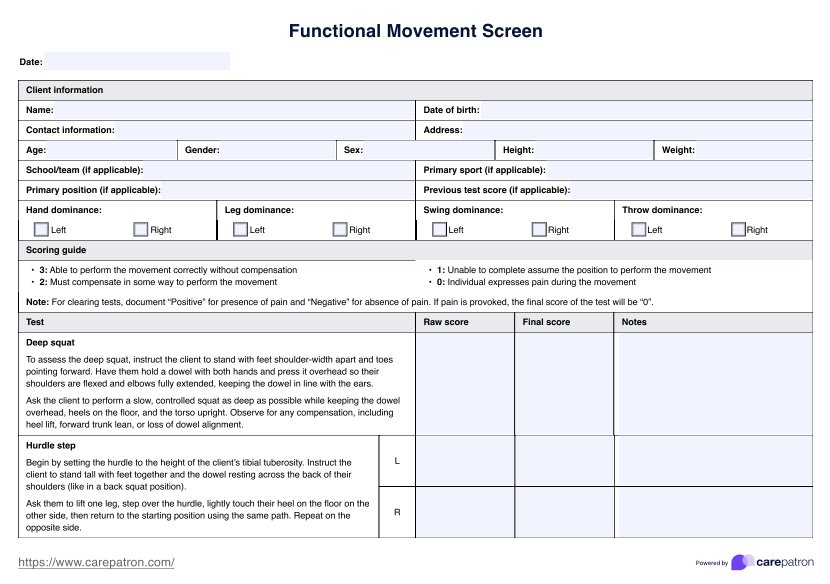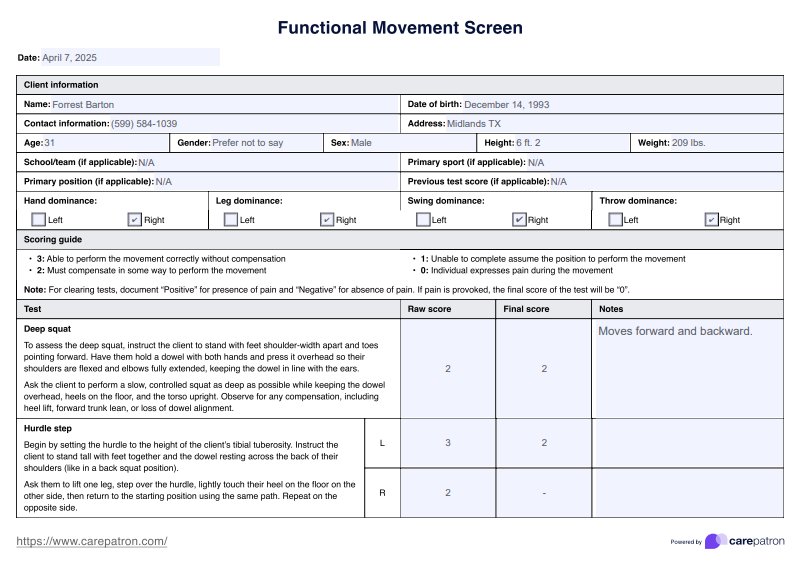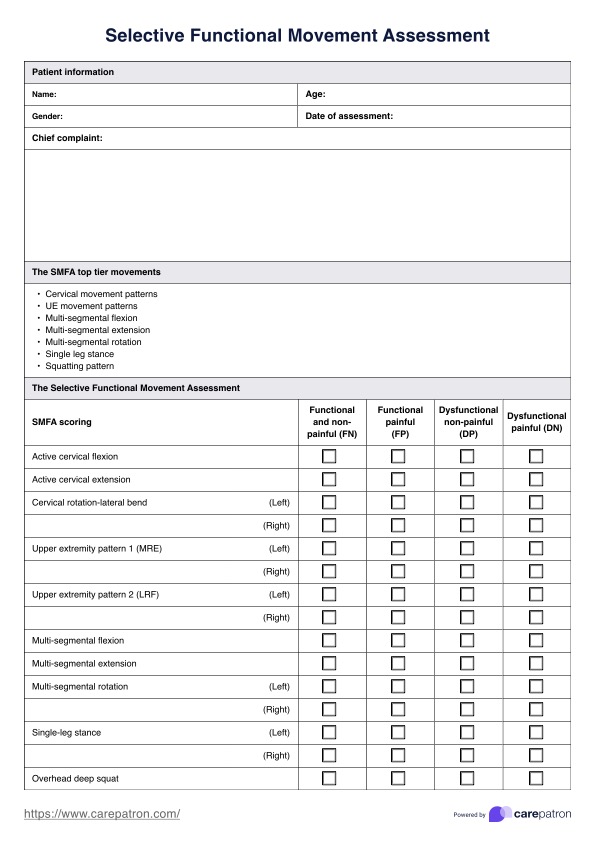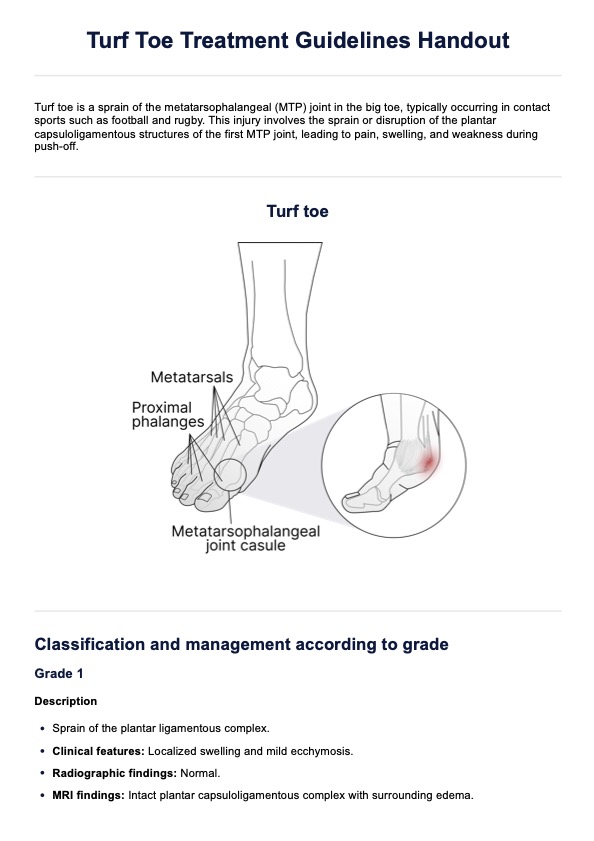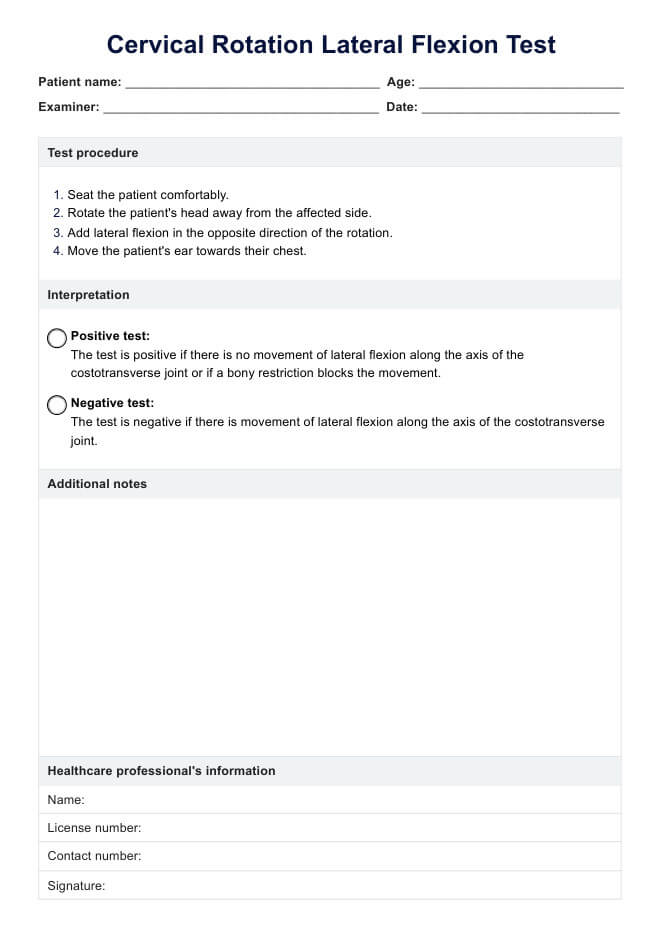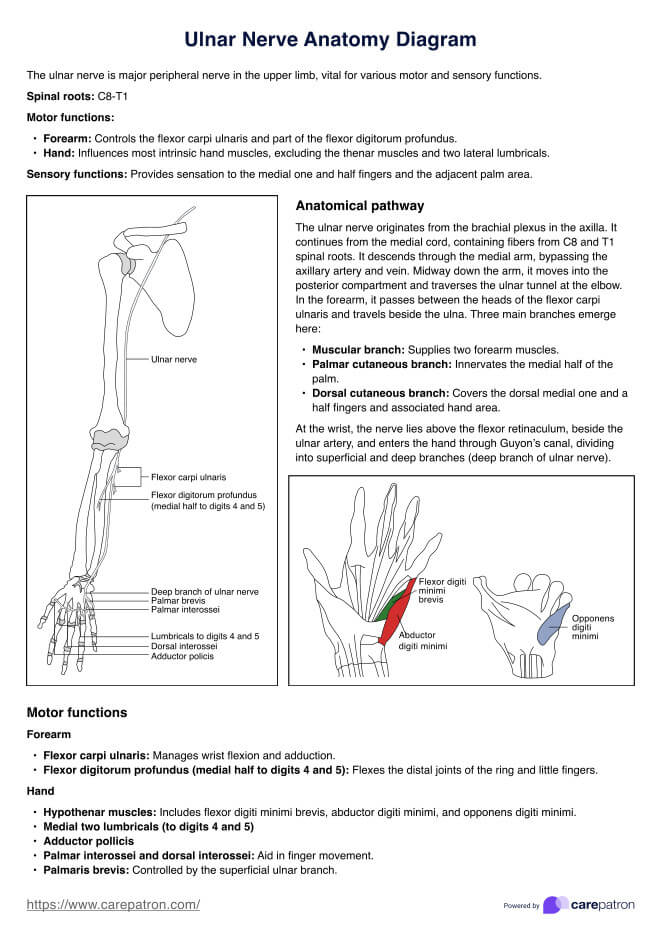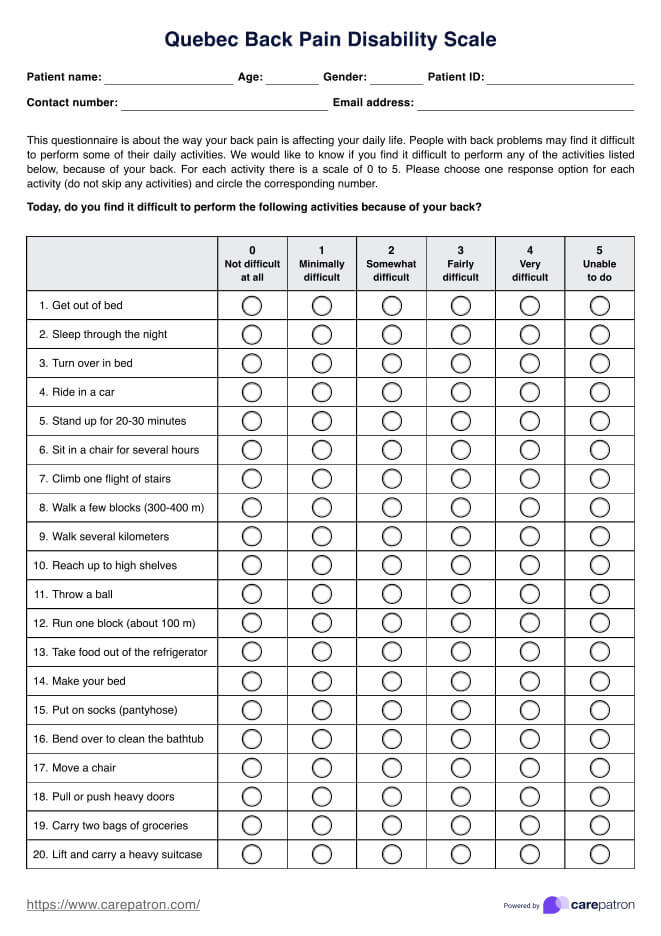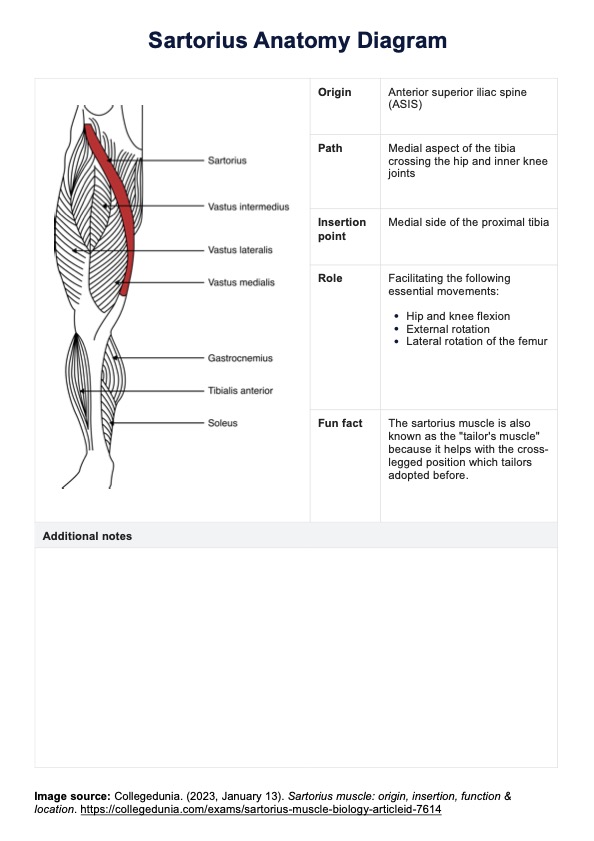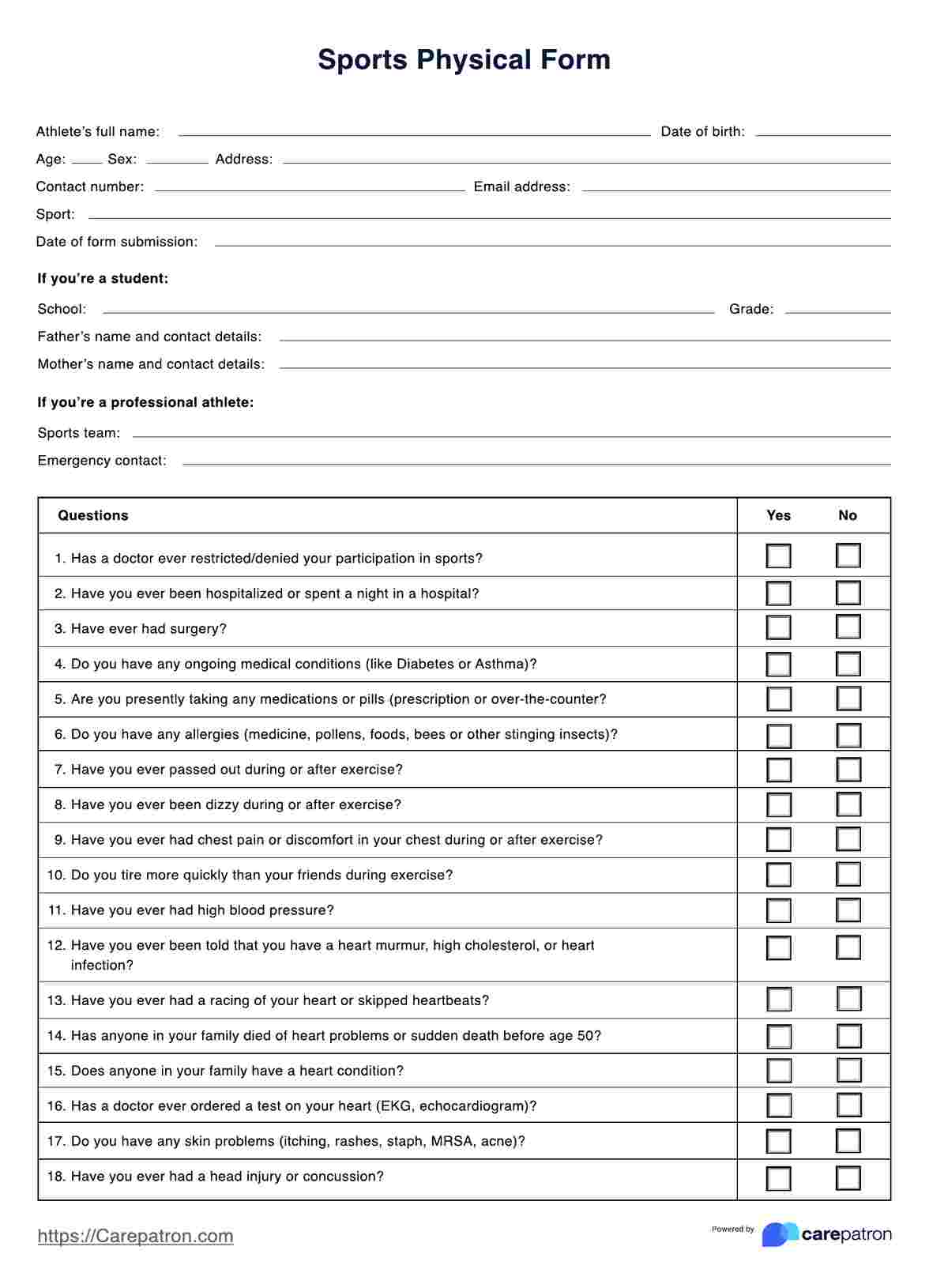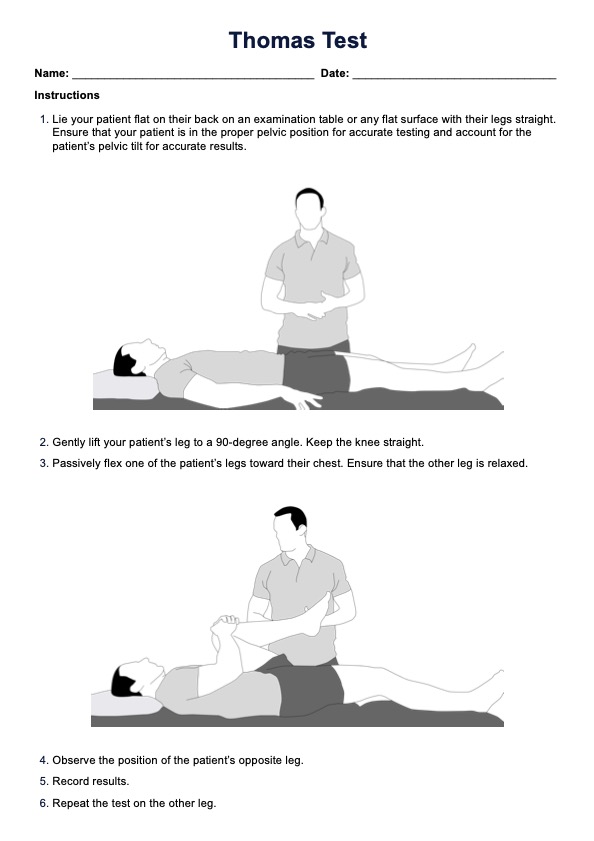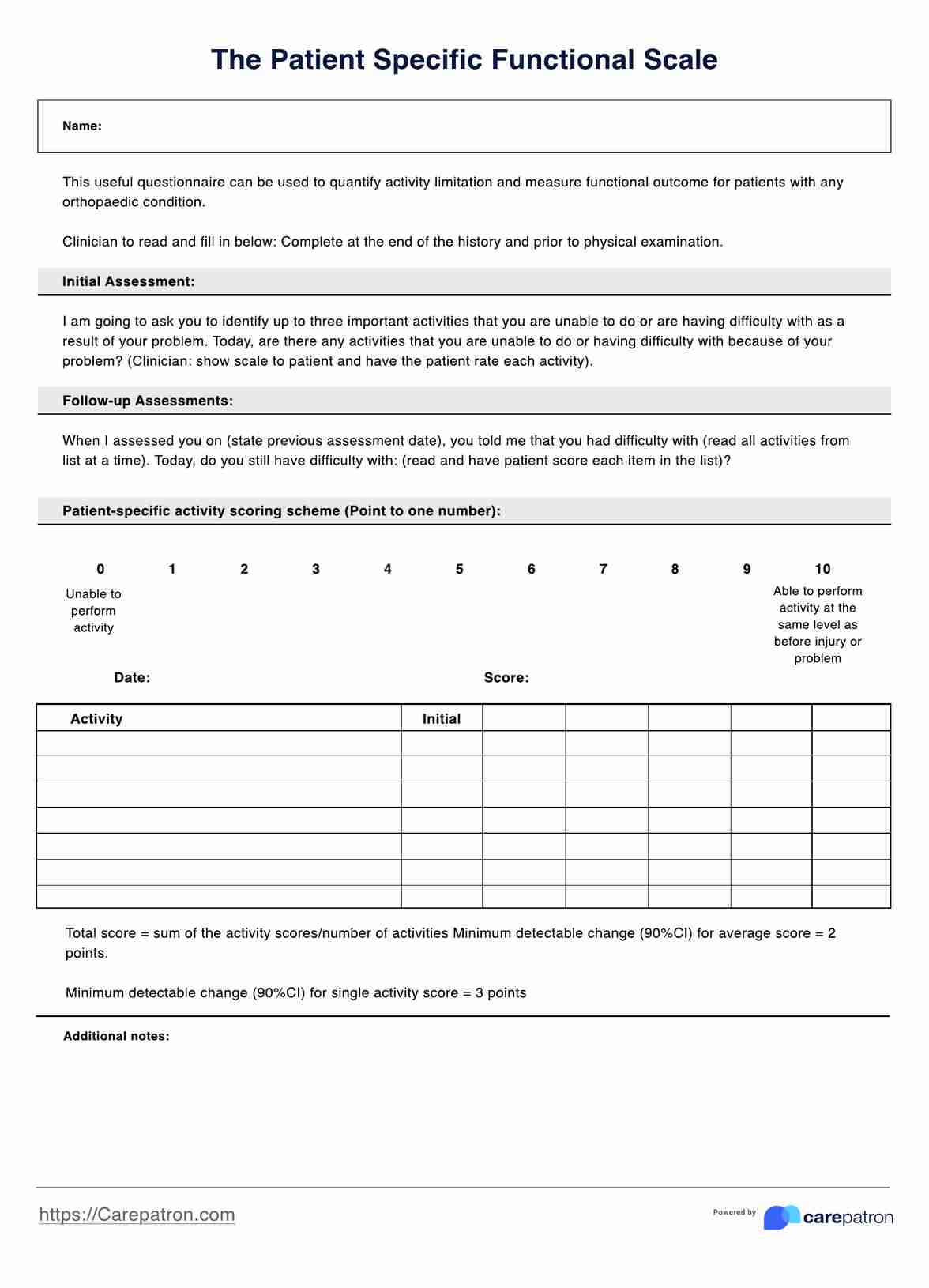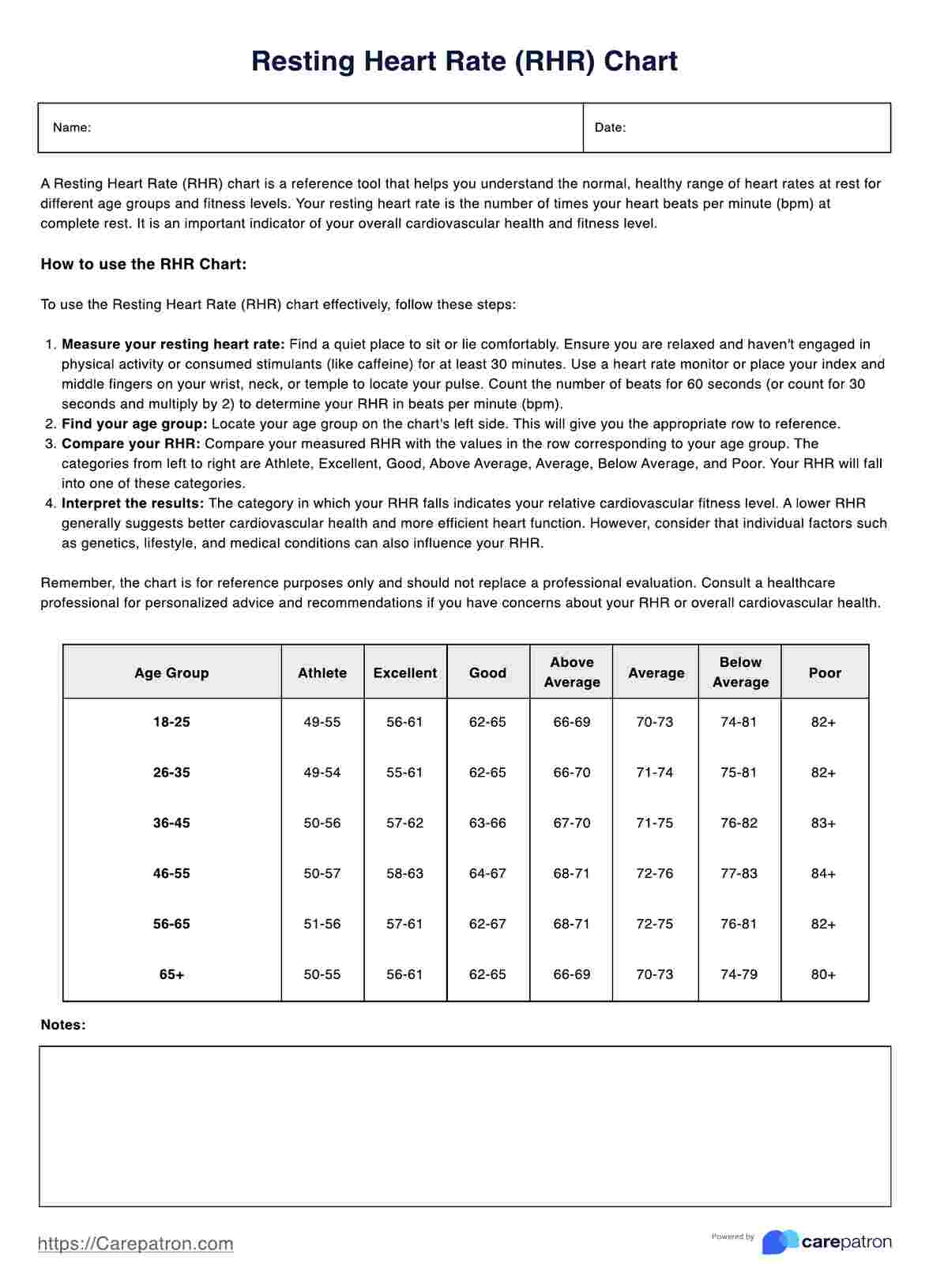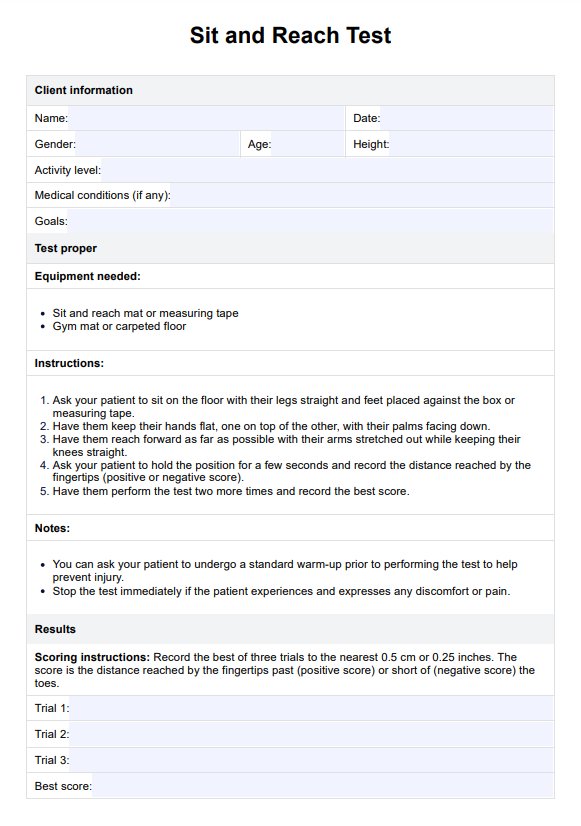Functional Movement Screen
Issue this Functional Movement Screen Test (FMS) to your clients to evaluate their musculoskeletal health.


What is a Functional Movement Screen?
The Functional Movement Screen, also known as FMS or, for athletes, the preseason Functional Movement Screen by Functional Movement Systems, is a series of standardized tests to objectively evaluate the seven fundamental movement patterns or every human movement pattern. Each of the standard FMS tests, namely the deep squat, hurdle step, in-line lunge, active straight-leg raise, trunk stability pushup, rotary stability, and the entire shoulder mobility test, are meant to assess movement competency, motor control, coordination, flexibility, core strength, mobility, and stability.
Healthcare practitioners like physiotherapists, rheumatologists, primary healthcare providers, and orthopedic and sports physical therapy specialists generally conduct this test, too, to check for poor movement patterns and movement dysfunction or to determine whether there are any potential or increased risks of developing or sustaining musculoskeletal disorders.
Although it is a given that a health professional must administer this screen test, anyone can be asked to take a test, whether that's a high-performing athlete or an active older adult. Should your client be wary of taking such tests, you may tell them it's as simple as checking if joints are moving smoothly and adequately. Moreover, functional movement screenings should only take 20 minutes, so they'll be finished in no time.
At the end of a test, a health practitioner may use this document as a basis for:
- Further tests for a diagnosis
- Conducting the Selective Functional Movement Assessment (SFMA)
- Developing programs for injury prevention, performance enhancement, or rehabilitation for athletes
- Basic health fitness program for other clientele
Functional Movement Screen Template
Functional Movement Screen Example
How to use the Functional Movement Screen template
To properly conduct the Functional Movement Screen or functional movement screening test with the help of our template, simply follow the instructions below:
Step 1: Access the template and fill it out
Click the "Use template" button to access the template via the Carepatron app, where you can modify it for your practice. Fill out the corresponding details: name, date, date of birth, contact number, address, gender, sex, height, weight, and any additional information if the client is an athlete.
Step 2: Conduct the test
Before you begin, prepare the following equipment needed for the test such as a dowel or measuring stick, hurdle, and measuring device. Once you've set up, conduct the test by asking your client to do the movements one by one. It's highly recommended that you follow the top-to-bottom order on the Functional Movement Screen template.
Step 3: Write the core and notes
After every test, don't forget to fill out both the raw score and total score boxes. Feel free to write down notes or observations, including suggested corrective exercises, in cases where you don't give the client a score of 3.
Step 4: Compute the total score
Once you're finished, add the final scores to come up with a total score.
FMS scoring
The client receives a raw score for each test based on their ability to perform the movement. A score of 0 is given if the client expresses pain at any point during the movement. A score of 1 is assigned if the client cannot complete the movement or even assume the proper position to perform it. If the client can complete the movement but does so with compensation, they receive a 2. The highest score, a 3, is awarded when the client performs the movement correctly without compensation.
To determine the final scores, start by recording the raw scores for the Deep Squat and Trunk Stability Push-up as they are—no adjustments needed. For the remaining tests that assess both the left and right sides (such as the Hurdle Step, In-line Lunge, Shoulder Mobility, Active Straight-leg Raise, and Rotary Stability), compare the raw scores from each side and carry over the lower score as the final score for that test.
Once all final scores have been determined, add them together to calculate the client’s total FMS score. Keep in mind that for the shoulder mobility, trunk stability push-up, and rotary stability tests, if the client experiences pain or fails the movement, they receive an automatic score of 0, regardless of their raw performance.
If you ever need a quick refresher, refer to the scoring guide provided in your Functional Movement Screen test template.
When to use the Functional Movement Screen template PDF
Any health practitioner can conduct the tests anytime and anywhere as long as they have the equipment and the Functional Movement Screen template available in PDF format on hand.
However, to prevent distractions, it's best to conduct the test at places where practitioners and clients undergo fitness testing, athletic performance, and physical therapy.
To make the most out of the assessment and the template, it's best that the test conductor only use the FMS template when:
- They are not looking to diagnose any orthopedic or musculoskeletal problems.
- They are not looking to screen other systems or more specific parts of the musculoskeletal system.
- The client isn't experiencing pain, hasn't suffered from previous musculoskeletal system injuries, or hasn't undergone tests for their joints, bones, and the like.
- They need a replicable, reliable, objective test that can be accomplished in less than half an hour.
Although our template is meant for one-time assessment per client, you can always print or save several blank copies of the Functional Movement System template for re-screening after around 4-6 weeks. Re-screening is helpful for rehabilitation professionals to check the effectiveness of the program the client is undergoing to move from bad to good or better in mobility.
Benefits of conducting the Functional Movement Screen test
There are multiple benefits to conducting the FMS test. Here are a few of them:
Efficient screening
An efficient screening tool only takes around 20 minutes. Hence, the Functional Movement Screen is perfect if you need a quick assessment to check your client's musculoskeletal health. You'll be able to cover most bases in the shortest time possible.
Objective measurement
Compared to other tests or a Q&A session, a Functional Movement Screen can provide numerical results, making it an objective measurement of musculoskeletal health.
Can be used for comparison
One of the goals of conducting a free Functional Movement Screen is to provide a basis for the client's current musculoskeletal health. So, whether the client is looking to improve from their poor condition or improve to get a score of 3 in each exercise, should the practitioners need a point of reference to see how much the client has improved and to compare scores, they can use this template with the initial test score.
Promotes collaboration
Since this template is strictly for screening, if one were to finalize a diagnosis, one must converse with specialists who deal with disorders in the musculoskeletal system. If the client is healthy and only needs improvement, practitioners would also need to collaborate with clients and fellow physical therapists to design a movement program that addresses any compensatory movement patterns.
Saves time and money
Although a single physician can conduct the test with any type of individual, it is mostly done on middle-aged employees and athletes.
Commonly asked questions
One administers the Functional Movement Screen by setting up the needed equipment, downloading the template, having it on hand, asking the client to do the movements written on the test, and scoring them.
Interpreting the raw and total score is as simple as following the legend written on the template. However, as for the total score, according to research, if your client scores less than or equal to 14, they have a higher risk of getting a musculoskeletal injury.
The Functional Movement Screen was developed in the 1990s by Gray Cook and Lee Burton, who were physical therapists.


